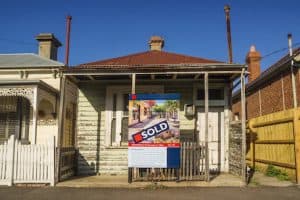Published by The Age, Sunday 4 March
When it comes to making housing affordable, Melbourne has always done it better than Sydney. Sydney’s geography may be spectacular, but it’s bad for building housing. Ocean to the east, mountains to the west, and the Ku-ring-gai national park to the north limit Sydney’s urban sprawl. Whereas Melbourne can build more – and cheaper – housing on abundant greenfield land closer to the city.
But the rules of the game are shifting. Melbourne’s urban ‘fringe’ is a lot further from the city centre today than 30 years ago. Most new jobs in our services-based economy are being created in or close to the city centre, far from those new homes. And relying on greenfield housing to accommodate most of our booming population is causing other problems: more traffic congestion, longer commutes and a big drop in the quality of family and social life.
The surging demand for housing, driven by low interest rates and strong population growth, has sent house prices skyrocketing. Melbourne’s population grew by 126,000 in 2016, much faster than 94,000 per year as forecast in the State Government’s 2017 Plan Melbourne. Melbourne is projected to grow to 8 million people by 2050, or roughly the size of London today. Melbourne needs a new housing game plan if it’s going to keep up.
It should follow Sydney’s lead by reforming planning rules to encourage home building in middle suburbs already well serviced by infrastructure and with good access to the city and its jobs. Sydney has added 60,000 new apartments in middle-ring suburbs in the past four years, mostly in buildings of four-to-nine-storeys. And this building boom is starting to pay dividends: Sydney house prices have fallen 4 per cent in the past six months.
In contrast, only 25,000 new apartments were built in Melbourne’s middle-ring suburbs over the past four years. Melbourne is getting the mix wrong. Too much of the new housing is CBD high-rises of 20 storeys or more.
Population density in the middle rings of Melbourne has barely changed in 30 years. We need to fill in the ‘missing middle’. That means the State Government will have to make it easier to build and redevelop in Melbourne’s inner and middle-ring suburbs. Our new report, Housing affordability: re-imagining the Australian dream, shows what needs to be done.
Fewer small-scale urban infill projects should require council planning approval. We recommend a new Small Redevelopment Housing Code that would protect neighbours, reduce planning uncertainty, and improve the quality of new developments. The Code would include the things that worry neighbours most, such as privacy, height, overshadowing of their outdoor areas, and the appearance of new developments from the street. It would cover developments that provide two-to-ten new dwellings in one- or two-storey developments. And it would apply to all residential areas, unless there are heritage or environmental restrictions. Sydney has shown the way: a similar fast-track development process covered 40 per cent of all residential development applications in Sydney in 2016, up from 3 per cent in 2008.
The Victorian Government should also allow denser development ‘as of right’ along key transport corridors, with height limits set up front. One recent study found that allowing 4-to-8-storey buildings along urban train, tram and bus routes in Melbourne could accommodate between 1 million and 2.5 million extra people. To reduce community resistance, the government should make it clear that the denser developments will be accompanied by new or improved transport services.
Of course, the politics of planning are poisonous everywhere. Most people in the established middle suburbs already own their home. Prospective residents who don’t live there can’t vote in council elections, and their interests are largely unrepresented.
The politics will only change if more people understand the costs of not building denser developments. Premier Daniel Andrews needs to point out that medium-density dwellings in established middle suburbs are exactly the kind of dwellings that current residents would like their children to buy. And this is also the kind of housing that existing residents will probably want to downsize into as they age.
The Victorian Government should use carrots and sticks to ensure local councils help meet the housing needs of a booming Melbourne. When councils fail to meet housing targets, independent planning panels should be given responsibility for assessing development applications. Again, Sydney has shown the way. The NSW Government recently announced that such independent panels will become mandatory across all Sydney councils for all developments valued between $5 million and $30 million.
These reforms would make a real difference – but they require a step change in political will. For the past decade, successive state governments have told Victorians they can fix housing affordability. And all the while house prices have continued to rise.
Without a new approach, Melbourne’s status as the world’s most livable city is under threat. Instead, Melbourne could soon find itself Australia’s most expensive city to live in. That’s a competition not worth winning.
*An edited version of this article appeared in The Age
 Published by The Age, Sunday 4 March
Published by The Age, Sunday 4 March